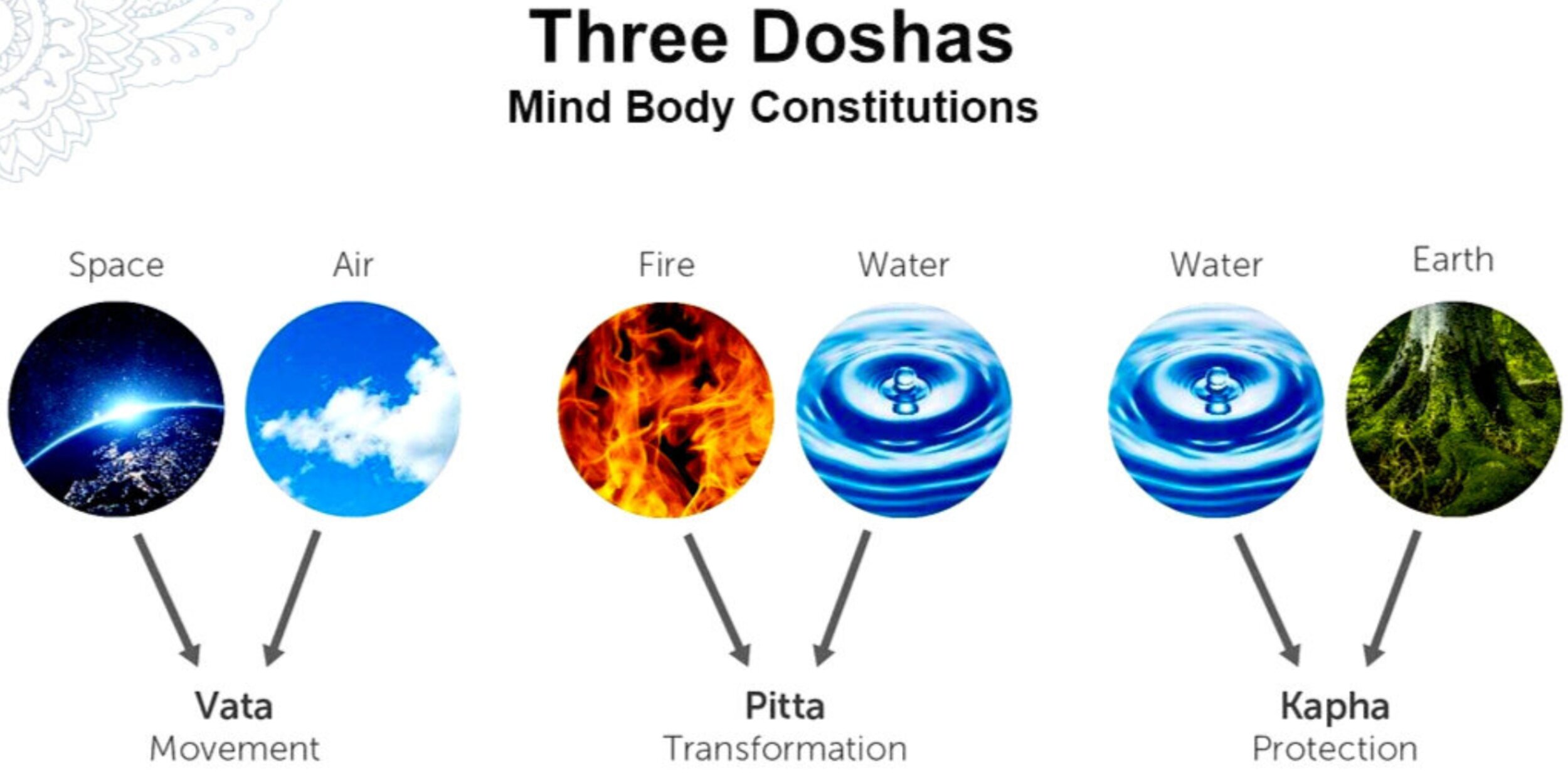The Five Elements
A core concept in the Ayurvedic view of the body and the larger universe is the presence of the five elements, known in Sanskrit as the ‘pancha mahabhutas’. The elements make up all matter living and nonliving. This will influence how we experience and respond to our surroundings as well as how our bodies might tend to act and react. They can be seen both in the physical and mental bodies and govern our entire physiology.
They are in fact the building blocks of the doshas and combine to form Vata, Pitta, and Kapha respectively. The foods we eat also contain combinations of the elements and influence the energetic effect each substance will have when consumed. This is the roadmap of the Ayurvedic diet we spend so much time navigating. As we learn to better identify the elements as they express within and around us, we learn to make better choices and also realise our potential to live in a way that brings us more ease and energy.
The elements are:
space or ether (akasha)
air or wind (vayu)
fire (tejas)
water (jala)
earth (prithvi)
These are the building blocks which are the basis of life of the whole universe (the macrocosm), as well as our body (the microcosm). Without them, life is not possible.
For instance, everything that exists occupies a space, otherwise referred to as ‘ether’. Wind or air is identified with movement, ie. pulse – a basic feature of life. Fire, heat or the sun are an indispensable prerequisites for life, like water and earth, also. The entire universe that surrounds us is made by combining these elements in different proportions.
Space (Akasha)
Space is that in which everything exists and acts. In the body this looks like the spaces between our organs, in our blood vessels, lungs, pores, intestines, etc. Space exists outside of us as well and relates to the sense of hearing as sound travels through space. Expansiveness and awareness are also related to the space element. This is the most subtle of the elements and represents the emerging of consciousness into physical being.
Air (Vayu)
Air is also sometimes referred to as wind as it governs movement and circulation in the body. Breathing itself as well as cellular oxygenation and most components of the nervous system are governed by this element. Air also involves the sense of touch, and so is represented by the skin. It shows up as sensitivity to our environment and stimuli and plays a strong role in memory recall. Air gives us lightness and the important ability to be flexible in our attitudes.
Fire (Agni)
Fire plays an extremely important role in Ayurveda as it is the element of transformation. It is also the one element that must be birthed into existence in the physical world to exist. All processes of digestion are governed by fire; digestion, absorption and assimilation of nutrients in the body must be processed by the fire element.
Water (Jala)
Water is called the universal solvent because of its ability to dissolve other substances and to suspend them within. This expresses in the body as feeling, fluidity of movement, calmness, and centered awareness. Water is seen in the fluids of the body in blood, lymph, saliva, etc. It gives us an overall sense of cohesiveness and provides a medium for nutrients, wastes and hormones to travel throughout the body and perform their functions. The water element governs the sense of taste and is represented by the tongue. It also governs the reproductive organs.
Earth (Prithvi)
Earth element is the grossest expression of the five elements and represents stability, strength and structure. It provides the underlying support for the other four elements to exist. Our bones, teeth, muscles, tendons and adipose tissue all arise from this element. Earth also governs the sense of smell and is represented by the nose. The organs of excretion are also mainly ruled by the Earth element. Allowing ourselves to ground and find our inner stability through focus and concentration, we open ourselves to the Earth element which connects the physical body with the mind.
Ayurvedic sages condensed these five elemental principles into 3 constitutional types, the doshas:
Vata - a combination of space and air
Pitta - a combination of fire and water
Kapha - a combination of water and earth


